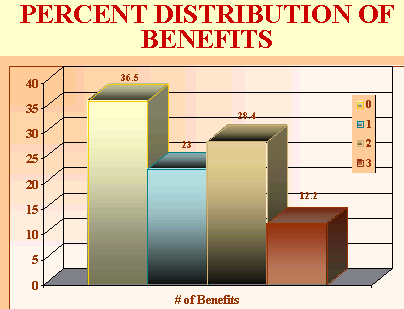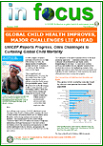|
Reproductive Health Behavior of Economically Disadvantaged Women in South India
India's population, 1 billion as of May 2000, is expected to top 1.5 billion in 2040, making India the most populous country in the world. Although the first country in the world to have a government-sponsored family planning campaign, India continues to suffer from a serious problem of too many people and too few resources. There is a pressing need to educate women about the importance of health care for ensuring healthy pregnancies, better planning and safe childbirths. The knowledge of family planning is almost universal but only 36% of married women aged 13 to 49 currently use modern contraception. Illiteracy is correlated to high fertility as women with no education have 4.0 children compared to 2.2 for women with a high school education. India's maternal mortality ratio is - 453 deaths per 100,000 births in 1993 - which researchers attribute to the lack of access to health care (The World Bank, 1995). Communications Strategies To examine the impact of health beliefs on family planning in India, in September 2000, CECHE sponsored fieldwork of graduate student Ms. Kalyani Subbiah, working under the supervision of Professor Fiona Chew of the SI Newhouse School of Public Communications at Syracuse University in New York. Kalyani Subbiah surveyed health beliefs regarding family planning among economically and educationally disadvantaged women in Chennai, South India. The objective was to develop optimal communication strategies for family planning. Seventy four economically- and educationally-disadvantaged women were interviewed, focusing on factors intrinsic to the health belief model, such as benefits and barriers, susceptibility, seriousness and cues to action. In addition, the study examined the relationship of cultural and social factors specific to India, such as gender issues and dowry, female feticide and infanticide; development issues such as lack of infra-structure, poor literacy rates, inadequate resources for the growing population; religious and traditional beliefs; and individual versus institutional conventions and mores. The Study Attempted To Answer The Following Questions:
A questionnaire, designed for married women of reproductive or child-bearing age who had little or no education and a low household income was used to gain an in-depth understanding of the health and cultural beliefs of economically and educationally disadvantaged women, their family planning choices, diet, physical activities, sources of information, and demographic information. Questions were also directed to understanding the context of the women's lives. The study was fielded for a month. Seventeen health professionals comprising doctors, social workers and public health agents were also interviewed for additional qualitative insights. Questions on reproductive health, beliefs and behavior focused on contraceptive usage, health care access, physical exertion, nutrition, body mass index, childbearing and sources for reproductive health information. Good reproductive health behavior was defined as using contraception, having access to health care and citing the doctor as a source of using contraception. Other data were collected on family decision making, culture, media habits and socio-demographic information. Results showed that sterilization, a permanent method of contraception, is adopted by nearly half the women (47.3%). Regression analysis revealed that perceived benefits were the strongest predictor of reproductive health behavior. To a much lesser extent, not using the family as a source of reproductive health information and a lower level of education also predicted reproductive health behavior (see chart). These findings were confirmed among women who used temporary methods or no methods of contraception, with the exception that education was not a significant predictor. Television is the most effective medium for reproductive health communication, because it enjoys the highest access (70.3%) and usage (n =51, mean =3.5) among this group of women. Over 75% of this group watches television and 58.8% took actions to improve their health, home and child care, healthier food shopping, and traditional medicine based on what they heard or saw on TV. 
A detailed analysis of the perceived benefits revealed that nearly two-thirds (63.6%) of the women reported at least one benefit for using contraception. (See chart.) Among the reported benefits were: a better lifestyle for children; affordability; freedom from fear of an unwanted pregnancy; recommendation by physicians for improving health; time to regain lost strength between pregnancies; spacing between children; and permanent contraception as an alternative to abortion. Two in five of the women (40.6%) enjoyed two or more benefits. These responses, among many others, demonstrate that the surveyed women are not motivated by self when it comes to reproductive health behavior, but by the needs of their relatives and children - by the larger unit, the family. Such culturally rooted reproductive health behavior among women has vast implications for future health education. The main lessons from this study are that:
Additional research should focus on identifying other barriers to good reproductive health behavior among these women, the male perspectives on reproductive health behavior and choices, the pressures of the arranged marriage system and extended family on health decisions of women and, the problems and pressures related to sexual relations for women. |
|
|||||||||||
Questions? Comments? Concerns? E-mail CECHE at CECHE@comcast.net Go back to the CECHE home page Go back to the CECHE home page
|


